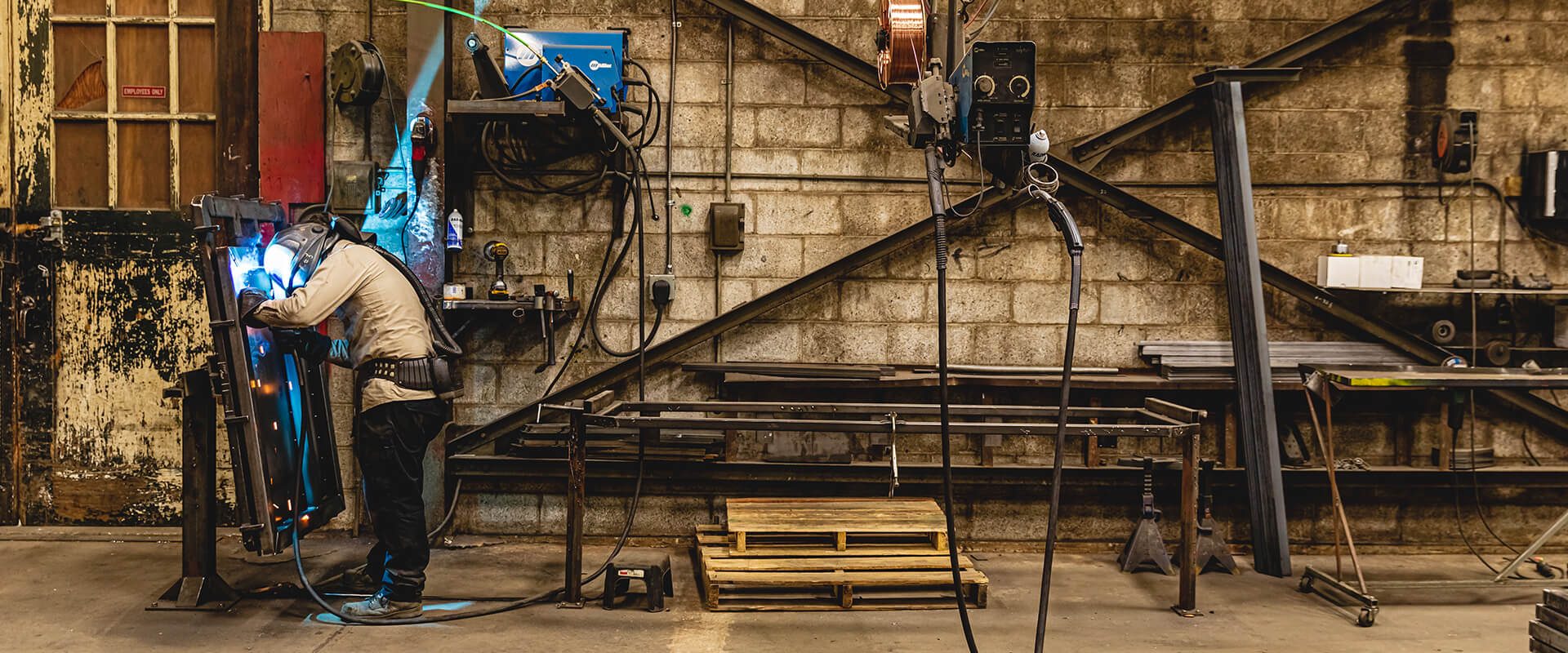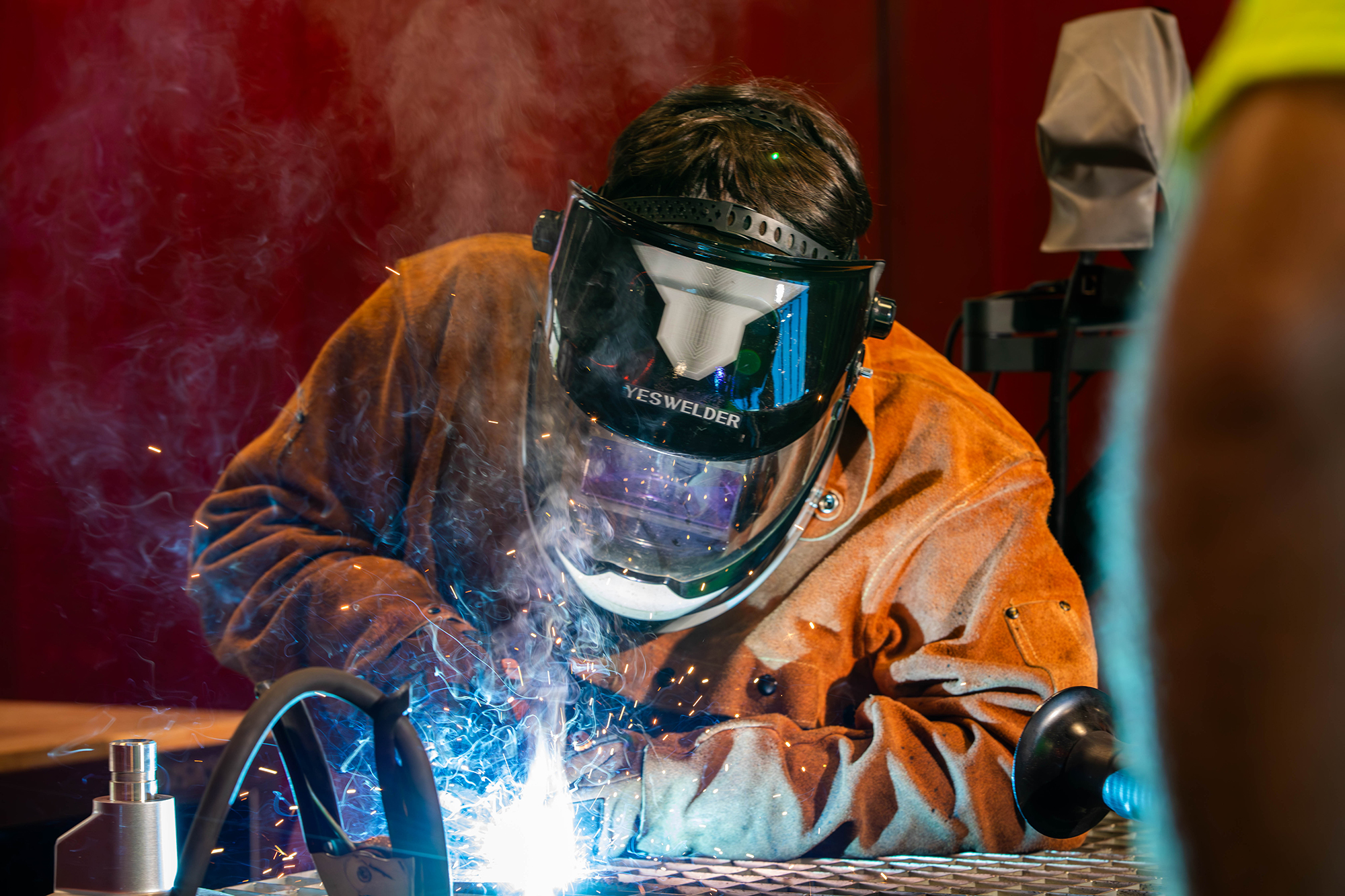Belgrade Fabrication’s essential steps for dealing with incomplete fusion
Usual Welding Repair Service Issues and Exactly How to Address Them Effectively
Welding repair services typically run into a variety of concerns that can threaten the stability of the final product. Typical issues consist of inadequate penetration, porosity, and imbalance, to name a few. Each flaw offers special obstacles that call for details methods for resolution. Understanding these issues is vital for welders intending to boost their outcomes and abilities. This discussion will discover these common welding repair service concerns and reliable approaches to address them.
Poor Infiltration
Insufficient penetration takes place when the weld metal fails to completely fuse with the base material, causing weak joints and possible structural failures. This concern typically comes from not enough heat input, inaccurate electrode angle, or incorrect welding speed. Welders may run into inadequate penetration because of a miscalculation of the necessary specifications for a particular product thickness or kind. Furthermore, contamination on the base material's surface area can hinder efficient bonding, aggravating the issue. To deal with insufficient infiltration, welders must guarantee appropriate settings on their equipment and maintain a clean work surface. Regular examination of welds is suggested to recognize any type of deficiencies early, permitting prompt adjustments and the avoidance of endangered architectural stability in welded assemblies.
Porosity
Porosity is an usual defect in bonded joints that materializes as little gas bubbles trapped within the weld steel. This defect can endanger the integrity of the weld, leading to lowered stamina and prospective failing under stress and anxiety. Welding. Porosity normally emerges from contamination, moisture, or incorrect welding techniques, which enable gases to leave into the molten weld pool. To resolve porosity, welders should assure correct surface area prep work, preserve a clean functioning environment, and make use of ideal welding criteria. Additionally, picking the best filler product and securing gas can reduce gas entrapment. Regular assessment and testing of welds can assist recognize porosity early, guaranteeing prompt rehabilitative actions are taken, therefore preserving the top quality and reliability of the bonded structure
Misalignment
Misalignment in welding can arise from numerous variables, including inappropriate arrangement and thermal expansion. Understanding the origin triggers is necessary for reliable resolution. A number of adjustment techniques are offered to realign parts and ensure structural integrity.
Sources of Misalignment
Welding imbalance typically originates from a variety of underlying concerns that can compromise architectural honesty. One main reason is inappropriate fit-up of parts before welding, which can bring about spaces and uneven surfaces. Variants in thermal growth throughout the welding procedure can additionally result in distortion, specifically if the materials being signed up with have different coefficients of growth. In addition, poor fixturing and securing may fall short to hold components securely in position, bring about activity throughout welding. Poorly kept equipment, consisting of welding makers and tools, might present inconsistencies in the weld bead, additional adding to misalignment. Ultimately, operator error, coming from inadequate training or experience, can also play a significant duty in creating misaligned welds.
Correction Methods Offered
Resolving misalignment effectively needs a combination of rehabilitative techniques customized to the certain issues handy. One typical method is using jigs or components to hold elements in the right setting throughout welding, making certain constant alignment. In addition, preheating the materials can help in reducing distortion and enhance fit-up. For significant imbalance, mechanical adjustment methods, such as utilizing hydraulic jacks or clamps, can be employed to fix the setting before welding. Post-weld heat treatment may likewise be required to soothe anxieties brought on by imbalance. Ultimately, mindful assessment and change during the setup stage can avoid imbalance concerns from coming to be substantial problems, promoting a smoother welding process and enhancing overall architectural stability.
Distortion
Distortion is a typical obstacle in welding that can arise from various elements, consisting of unequal heating and cooling. Comprehending the reasons for distortion is essential for executing reliable prevention strategies. Addressing this issue not just enhances architectural integrity yet additionally boosts the overall quality of the weld.
Causes of Distortion
When based on the extreme warmth of welding, materials typically undertake changes that can lead to distortion. This sensation mostly occurs from thermal expansion and contraction throughout the welding procedure. As the weld location heats up, the product increases; upon air conditioning, it acquires, which can produce interior stress and anxieties. In addition, irregular home heating across a work surface can aggravate these stress and anxieties, causing warping or bending. The sort of product also plays a considerable duty; steels with differing thermal conductivity and coefficients of growth might respond differently, bring about unforeseeable distortions. Bad joint layout and poor fixturing can add to misalignment during welding, raising the likelihood of distortion. Comprehending these reasons is necessary for reliable welding fixing and prevention techniques.
Avoidance Techniques
Reliable prevention techniques for distortion throughout welding emphasis on managing warmth input and making sure correct joint style. Preserving a constant warmth input helps to reduce thermal growth and tightening, which can lead to distortion. Utilizing strategies such as pre-heating the workpiece can also lower the temperature level slope, advertising uniform heating. Furthermore, picking suitable joint designs, such as T-joints or lap joints, can boost security and decrease tension concentrations. Executing proper fixturing to protect the click here for info workpieces in position even more aids in preserving placement during the welding procedure. Finally, staggered welding sequences can distribute warmth more equally, stopping localized distortion. By using these approaches, welders can significantly reduce the possibility of distortion and enhance the total top quality of their welds.
Splitting
Cracking is a typical problem come across in welding repair services, commonly resulting from numerous variables such as improper air conditioning rates, material option, or poor joint prep work. The incident of splits can significantly jeopardize the integrity of the weld, leading to potential failings throughout procedure. To address this concern, welders have to first examine the origin, making certain that materials are suitable and appropriately picked for the specific application. Furthermore, regulating the article source cooling rate throughout the welding procedure is important; rapid air conditioning can generate stress and cause breaking. Appropriate joint style and preparation also add to lessening the threat. Executing these approaches can boost weld high quality and sturdiness, inevitably decreasing the chance of cracking in ended up weldments.

Insufficient Combination
A substantial concern in welding repairs is insufficient combination, which occurs when the weld metal does not effectively bond with the base product or previous weld passes - Belgrade Fabrication. This flaw can cause weak points in the joint, possibly jeopardizing the stability of the welded structure. Variables contributing to insufficient blend consist of insufficient warmth input, incorrect welding technique, and contamination of the surface areas being joined. To address this issue successfully, welders need to ensure proper pre-weld cleaning and surface area preparation, along with change their welding parameters to accomplish adequate penetration and combination. Routine inspection during the welding process can additionally help determine insufficient combination early, permitting prompt restorative steps to boost the total high quality of the weld
Overheating
While welding repair work can enhance architectural honesty, overheating offers a substantial difficulty that can cause product deterioration. Too much heat throughout welding can modify the mechanical properties of steels, resulting in lowered stamina, official source increased brittleness, and warping. This phenomenon is specifically critical in high-stress applications where structural dependability is vital. Identifying overheating can entail visual inspections for discoloration or distortion, as well as checking temperature during the welding process. To reduce the risks connected with getting too hot, welders need to employ appropriate strategies, such as controlling heat input, readjusting travel rate, and using suitable filler products. Additionally, carrying out pre- and post-weld warm therapies can assist restore material buildings and enhance the total quality of the repair service, ensuring long-term efficiency and safety and security.
Often Asked Concerns
What Are the Usual Indicators of a Welding Flaw?

Exactly How Can I Evaluate My Welds for Top quality?
To examine welds for quality, one can make use of aesthetic evaluations, ultrasonic screening, and radiographic techniques. Each method ensures architectural stability, identifies flaws, and confirms adherence to defined standards, ultimately enhancing the integrity of the bonded joints.
What Safety and security Safety Measures Should I Take While Welding?
When welding, one need to focus on security by wearing suitable personal protective tools, making certain appropriate ventilation, securing flammable materials away, keeping a clean work area, and knowing surroundings to avoid injuries and crashes.
Can I Fix a Weld Without Redoing the Entire Joint?
Repairing a weld without redesigning the whole joint is feasible, depending on the damages (Welding). Methods such as grinding, including filler material, or utilizing a welding procedure can effectively resolve specific problems while preserving the surrounding structure
What Equipment Are Necessary for Effective Welding Services?
Vital tools for reliable welding repair work include a welding machine, wire brush, mill, protective equipment, clamps, and filler products. Each device plays a crucial role in making sure top quality and security throughout the repair service procedure. Porosity commonly develops from contamination, dampness, or improper welding strategies, which permit gases to leave right into the molten weld swimming pool. Poorly maintained equipment, including welding machines and tools, might present incongruities in the weld bead, additional adding to misalignment. When subjected to the intense warm of welding, materials often go through modifications that can lead to distortion. Fracturing is a typical issue encountered in welding repair work, usually resulting from numerous factors such as incorrect cooling rates, material selection, or poor joint preparation. A substantial issue in welding repairs is insufficient fusion, which happens when the weld steel does not sufficiently bond with the base product or previous weld passes.